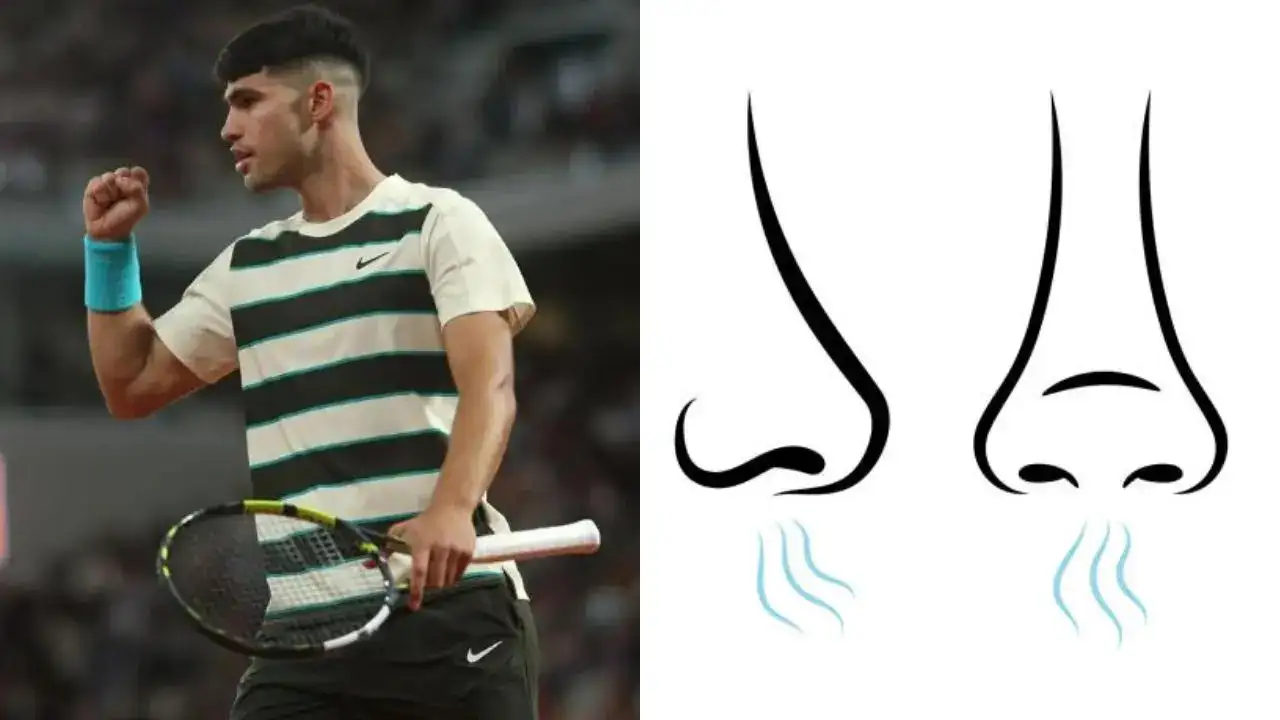
Nasal strips are stiff pieces of fabric that wrap around the nose and stick to the outside of the nostrils, widening them
Four-time tennis grand slam winner Carlos Alcaraz often uses nasal strips to breathe easily during his matches. Carlos is currently bidding for a second consecutive French Open title and wears an adhesive band most of the time.
At the 2024 season-ending ATP Finals last November, Alcaraz said, “It is something that I’m going to wear more often. I could recover better between points.”
Once associated with Pro Football Hall of Famer Jerry Rice and soccer superstars like Cristiano Ronaldo and Neymar, these bands—that look like a Band-Aid worn across the bridge of the nose—are popping up on tennis courts — sometimes out of necessity, sometimes out of curiosity.
What are nasal strips?
Nasal strips are stiff pieces of fabric that wrap around the nose and stick to the outside of the nostrils, widening them and making it easier for air to flow through the nose. Some sleepers also snore less while wearing nasal strips.
Many times, the airflow through the nose may become significantly reduced due to narrowness from anatomy, a deviated septum, congestion from a cold, or allergies. Nasal strips work to reopen this passageway so that air can flow as it should. The stiffness of these adhesive strips pulls the nostrils open from the outside, much like lifting the sides of a peaked tent to make more space in the interior.
According to doctors, nasal strips work by widening the nostrils to improve airflow and reduce resistance in the nasal passage, especially the narrowest part known as the nasal valve. These strips are adhesive bands with a spring-like action that gently pulls the nostrils open, allowing more air to pass through. They also adhere to your skin, holding open the anterior nasal aperture and preventing it from collapse. When properly applied, the strips can widen the space in the nasal passage. They are a drug-free method to maintain airway flow and are available as an over-the-counter product.
Are there side effects of using nasal strips?
According to experts, apart from a possible skin reaction from the adhesive that is used to make nasal strips or injury to the skin with the removal, there are likely few risks to using these products.
However, though nasal dilator strips may improve snoring, they do not treat sleep apnea. Using the strips to reduce apnea symptoms may give a false sense of confidence in the effectiveness of the therapy, which can lead to complications.
Other ways to breathe right
Apart from the strips, there are many strategies you can try that may help you snore less or stop snoring.
Lose Weight
Experts recommend that people with obesity lose weight, which often results in breathing less and snoring.
Avoid alcohol and tobacco
Since alcohol and tobacco are linked to increased issues with breathing, doctors recommend quitting smoking.
Try changing your sleep position
If you sleep on your back, try sleeping on your side to see if breathing becomes fine. You can also create your own system for avoiding back sleeping by sewing a pocket on the back of your shirt and putting a tennis ball in it to keep yourself from rolling onto it during the night.
Reduce congestion
If you happen to snore due to nasal congestion, this is a good place to start. You can reduce congestion by using a saline nasal irrigation rinse or using a nasal spray or another topical decongestant.
Upper airway exercises
According to studies, exercising the tongue and throat muscles can help open the upper airway and ensure a smooth flow of breathing.
